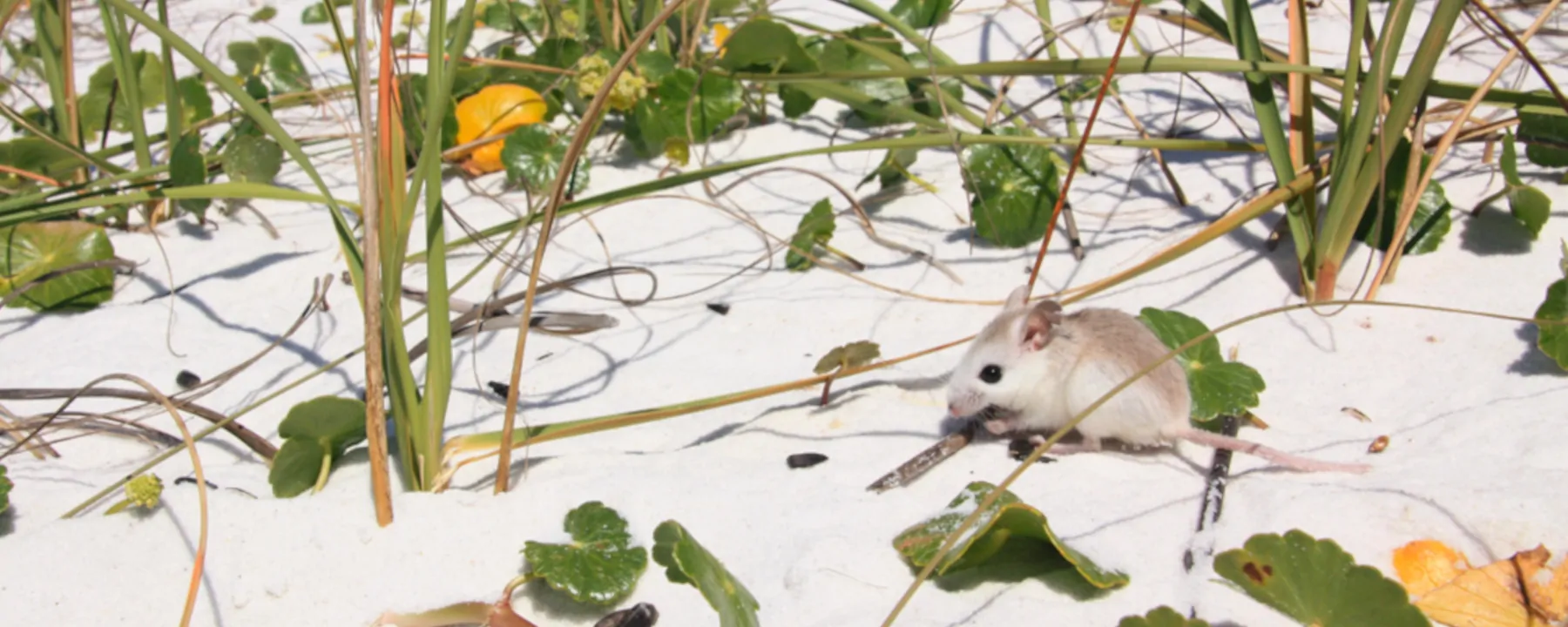Prairie voles lacking functional receptors for oxytocin form normal social bonds, a finding that could explain the hormone’s clinical failures.
Natalia Mesa, PhD
Jan 27, 2023 | 4 min readPDF VERSION
ABOVE:A pair of prairie voles (Microtus ochrogaster)NASTACIA GOODWIN
Prairie voles mate for life. Much like humans, once voles form a pair bond—typically with a member of the opposite sex—they cohabitate, coparent, and even prefer each other’s company over that of other voles. Decades of research on the monogamous rodents have led to a better understanding of the so-called love molecule oxytocin, a hormone that studies have suggested is crucial for forming social bonds in prairie voles, humans, and various other species.
But new research published today (January 27) in Neuron has turned 40 years of oxytocin research on its head by showing that voles without oxytocin receptors still form pair bonds. The finding might hold clues as to why researchers have had mixed success in using oxytocin to treat conditions that disrupt the formation of social bonds, such as depression and autism, the authors say.
“I think that it really does require revisiting and reimagining of what we think oxytocin is actually doing,” says Alexander Ophir, a neuroscientist at Cornell University who was not involved in the study.
See “Oxytocin for Autism?”
A lot of what neuroscientists know about social bonding between humans (as well as between other animals) has roots in experiments with prairie voles (Microtus ochrogaster)—tiny, grayish-brown rodents native to Central North America. The animals innately and rapidly form pair bonds, making them the ideal model species to study social attachment. And for decades, study after study has shown that oxytocin is critical to their pair bonding, as using drugs or siRNA (a technique that blocks gene expression) to disrupt oxytocin receptor function in adult voles always prevented bond formation. The literature was so settled, says Zoe Donaldson, a neuroscientist at the University of Colorado Boulder who was not involved in the study but has collaborated with the researchers in the past, that she speculates that some people would have questioned the need to do the present study.
See “Epigenetics Play Cupid for Prairie Voles”
Devanand Manoli, a coauthor of the new study and a behavioral neuroscientist at the University of California, San Francisco is not one of those people; he has been interested in studying the genetic basis of attachment in voles for 14 years. “Prairie voles are closely related to other promiscuous species and yet they have these [unique] social behaviors, which supports this idea that there’s a strong genetic component to that behavior,” says Manoli. But until now, few research groups had performed genetic manipulations on prairie voles (even though such manipulations are now ubiquitous in mice) partly due to the difficulty of such experiments. Tinkering around with the genome of a new animal always requires “bespoke” techniques, says Manoli.
After years of trying to make a transgenic vole, the eventual advent of CRISPR allowed Manoli to create voles lacking the gene for oxytocin receptors, Oxtr, which then permitted him and his lab to study the receptor’s role in behavior. The researchers injected the CRISPR-Cas9 system into single-cell vole embryos, chopping out the oxytocin receptor gene and replacing it with a defective, mutant version. The resulting animals produced oxytocin but had no functional oxytocin receptors anywhere in their bodies. And yet, the genetically engineered voles exhibited normal parenting and bonding behavior. They produced less milk than normal voles, meaning fewer of their offspring survived, and those that did tended to weigh less than normal vole pups, but no other developmental or physiological differences were noted by the researchers.
“The era of ‘one gene affects one behavior’ is over,” says Ophir.
To explore potential behavioral anomalies in the engineered voles, the researchers performed a partner preference assay. The voles were raised alongside their siblings of the same sex. Upon reaching adulthood, the scientists paired them up, placing one female and one male in a cage for a week. Afterward, the voles were brought into a different chamber with three compartments. The researchers placed a vole, its pair-bonded partner, and an unfamiliar vole in three separate chambers. The vole’s partner and the unfamiliar vole were both tethered in place, while the original vole had access to all three chambers for a period of three hours, during which the researchers measured the amount of time it spent with its pair-bonded partner versus the unfamiliar vole.
Kristen Berendzen, a postdoc in Manoli’s lab, recalls coming into Manoli’s office with the news that the voles without oxytocin receptors spent just as much time together as normal voles, and thus appeared to form normal pair bonds. “There’s something really cool happening here,” she recalls Manoli saying. “We were going into it very much expecting to see at least some decrement in the formation of bonds,” says Berendzen. “The fact that we saw no effect [on bonding] was surprising.”
I think that it really does require revisiting and reimagining of what we think oxytocin is actually doing.
—Alexander Ophir, Cornell University
The researchers aren’t discounting oxytocin as important for forming social bonds, pointing out key differences between their work and previous studies. In previous work, scientists disrupted oxytocin signaling in adulthood, whereas, in the present study, the voles never had the oxytocin receptor in the first place. So while authors say they don’t yet understand why voles can still form pair bonds even without the oxytocin receptor, they expect that the voles may compensate for the lack of oxytocin during development by activating other genetic circuits. “It’s perhaps not that surprising that the species has evolved multiple mechanisms to ensure that what’s important for them is to survive can actually occur,” says Manoli. They also speculate that in a more complex or naturalistic environment, the voles might display some social deficits.
Oxytocin is often used to treat social disorders, but it’s not always effective; Ophir and Donaldson agree that the vole findings could offer a possible explanation as to why. The study authors speculate in the paper that because oxytocin isn’t necessary for social bonds to form, it’s possible that some social behavior symptoms that people experience stem from the as-of-yet undiscovered alternative pathways that the voles lacking oxytocin receptors used to form their attachments. And in such cases, the hormone may not have much impact on symptoms simply because it’s not the root cause of them. Ophir and Donaldson also agree that the findings are particularly relevant in the context of development, and oxytocin’s role may change depending on early experiences.
Donaldson adds that the study’s revelation that oxytocin isn’t required for bonding has translational potential, adding that it might be possible to “stimulate” social behavior in individuals that don’t receive pleasure from social interactions if researchers can understand and activate these compensatory mechanisms.
Manoli agrees, saying that in the future, he’d like to do similar studies in more naturalistic environments and adopt some of the tools already well-established in mice to further understand how social memories are formed in the absence of oxytocin. Rather than discount the hormone’s therapeutic potential, he says the study “opens up opportunities for really targeting and being more specific about our interventions” for conditions that present with social deficits.





























